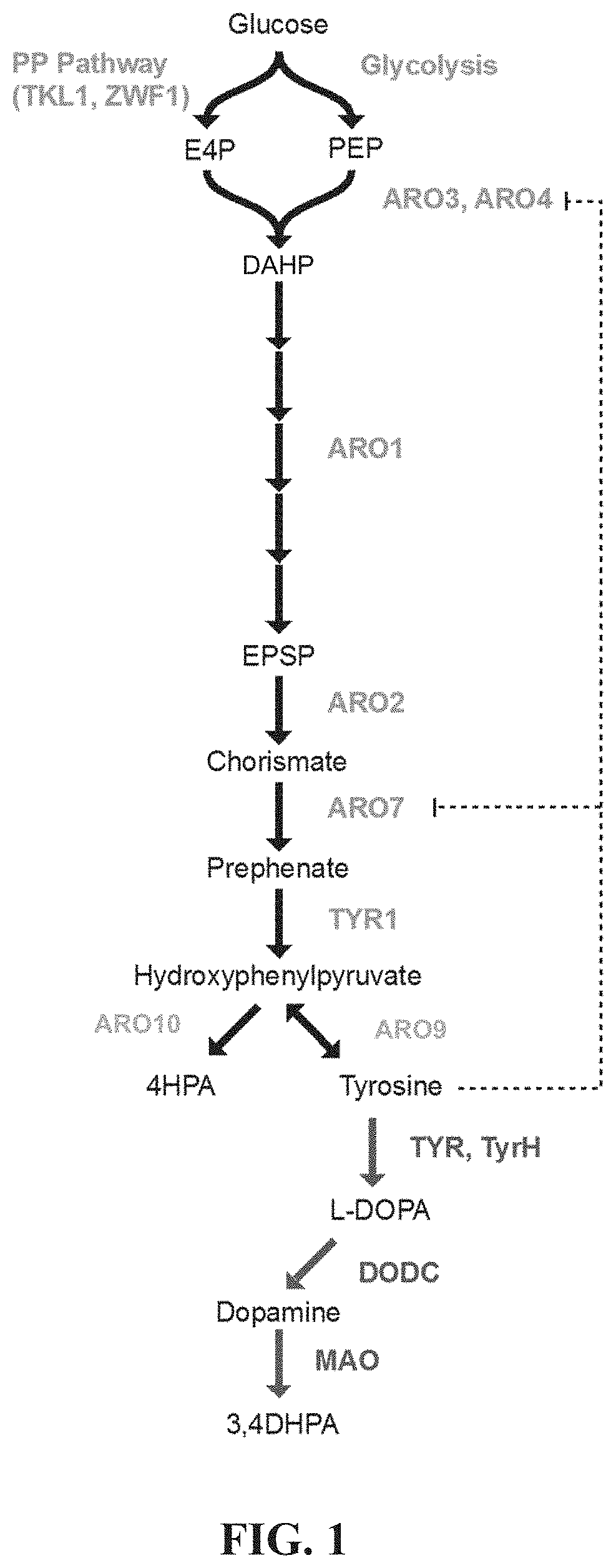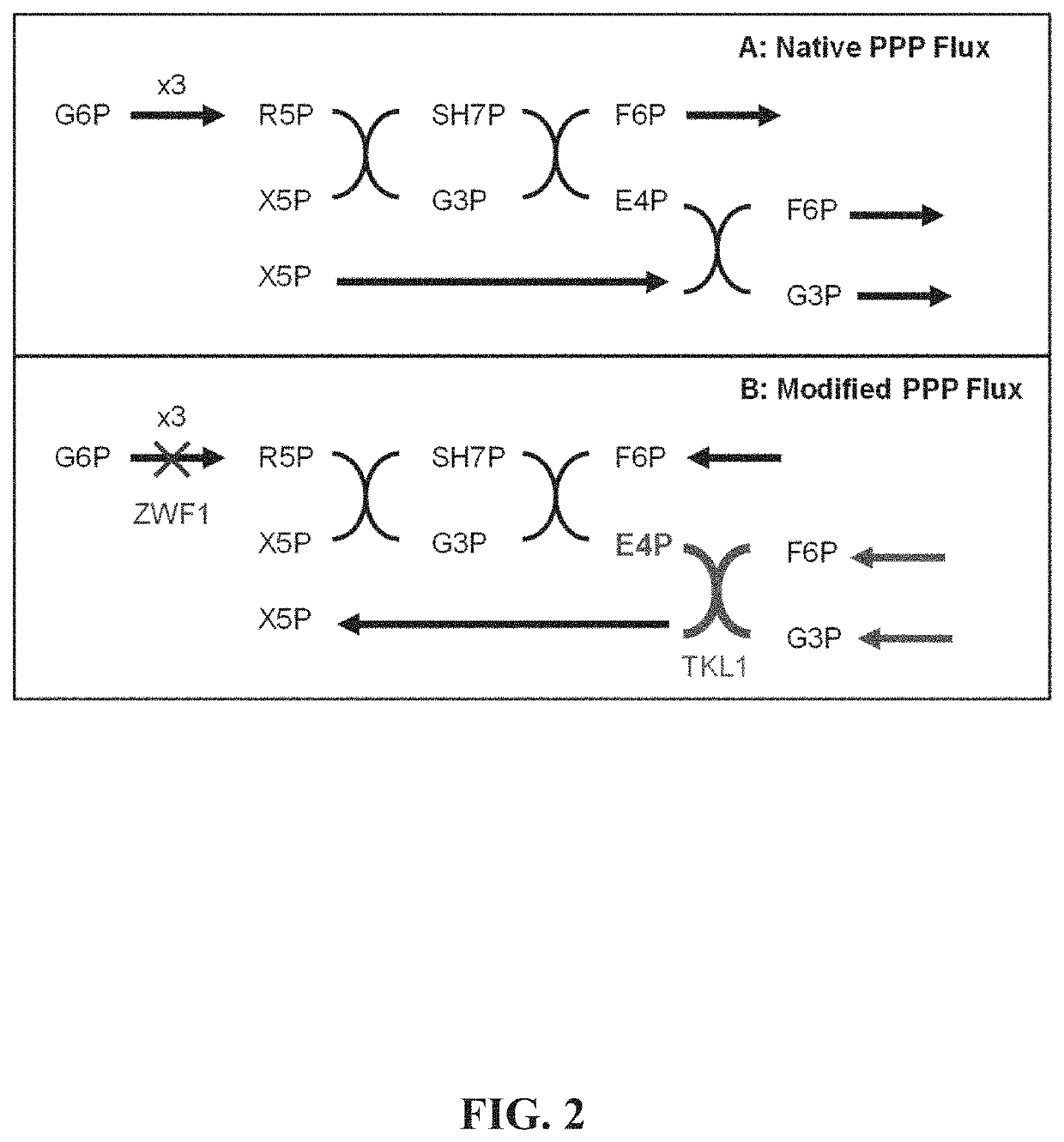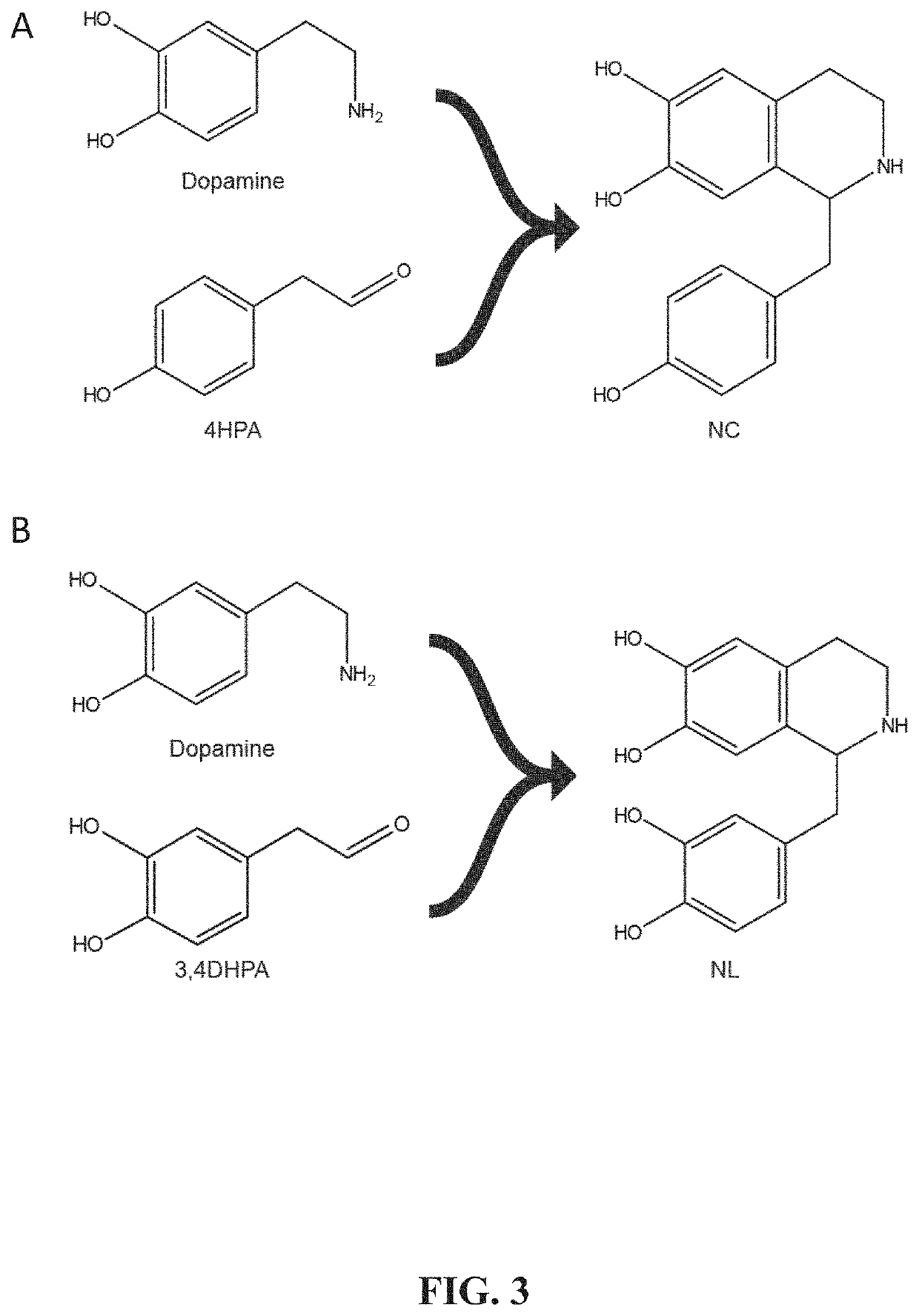Benzylisoquinoline alkaloid (BIA) precursor producing microbes, and methods of making and using the same
a technology of benzylisoquinoline alkaloid and precursor, which is applied in the direction of enzymology, lyase, carbon-carbon lyase, etc., can solve the problems of low yield of chemical synthesis of bias and unfavorable large-scale production
- Summary
- Abstract
- Description
- Claims
- Application Information
AI Technical Summary
Benefits of technology
Problems solved by technology
Method used
Image
Examples
example i
[0168]A series of specific genetic modifications provide a biosynthetic process in Saccharomyces cerevisiae for the production of BIAs from simple, inexpensive feedstocks or precursor molecules. Methods for constructing novel strains capable of producing the early BIA molecules norcoclaurine (NC) and norlaudanosoline (NL) from non-BIA precursors or simple feedstocks are described. NC has never been reported as a product of microbial synthesis and is the natural precursor to all known BIA molecules. Methods for manipulating the regulation of yeast biosynthetic pathways and for optimizing the production of aromatic amino acids and related BIA precursors are also described.
A. Tyrosine and Related BIA Precursor Overproducing Yeast Strains
[0169]Strains of S. cerevisiae are developed with improved flux through the aromatic amino acid biosynthesis pathway for the purposes of increasing intracellular concentrations of BIA precursor molecules including tyrosine, 4-hydroxyphenylacetaldehyde (...
example 2
Processing Methods from Fermentation to Purification to API
[0212]During the final stages of the fermentation, the organic liquid ethyl acetate is added to the culture medium at 20% of the volume of the culture broth. At this time the pH of the culture medium may also be increased to support the extraction of BIAs into the organic ethyl acetate phase. The agitation from the stirrer and sparger causes the immiscible ethyl acetate to form an emulsion with the aqueous medium. At the completion of the fermentation the stirrer and sparger are switched off and the aqueous and organic phases are allowed to separate. A demulsifier or other chemical agent may be added to promote the separation into two distinct phases. The cells settle to the bottom of the reactor and form a third layer. The three layers are separated by decantation. The cell and aqueous culture medium phases are discarded. The BIA precursor- or BIA-containing organic phase is treated with heat and vacuum to remove the ethyl ...
example 3
Processing Methods from Fermentation to Purification to API
[0213]The fermentation broth is centrifuged to remove cells and particulates. The remaining aqueous clarified culture medium is processed by a similar method used to extract BIAs from aqueous poppy straw extract in the kabay process (GB406,107). The clarified culture medium may be acidic due to the fermentation processes. If not, the medium is acidified by addition of sulfuric acid. The alkaloids are concentrated in the clarified culture medium by the application of a vacuum or heat. The solution is treated with ethanol to precipitate impurities including proteins and DNA. Further treatment involves several rounds of acid-base extraction and may include the addition of organic solvents to aid in extracting distinct BIA species into a second phase.
PUM
| Property | Measurement | Unit |
|---|---|---|
| time | aaaaa | aaaaa |
| time | aaaaa | aaaaa |
| time | aaaaa | aaaaa |
Abstract
Description
Claims
Application Information
 Login to View More
Login to View More - R&D
- Intellectual Property
- Life Sciences
- Materials
- Tech Scout
- Unparalleled Data Quality
- Higher Quality Content
- 60% Fewer Hallucinations
Browse by: Latest US Patents, China's latest patents, Technical Efficacy Thesaurus, Application Domain, Technology Topic, Popular Technical Reports.
© 2025 PatSnap. All rights reserved.Legal|Privacy policy|Modern Slavery Act Transparency Statement|Sitemap|About US| Contact US: help@patsnap.com



